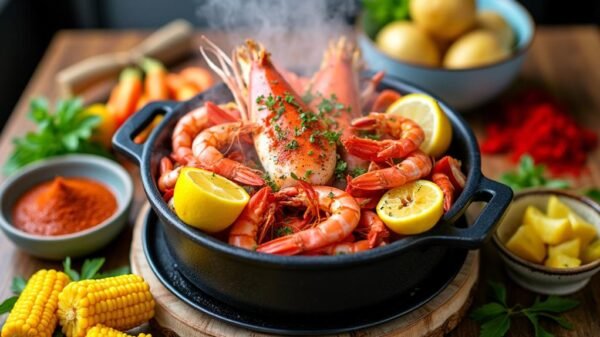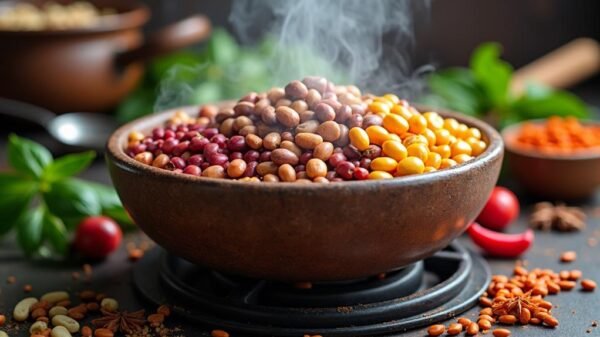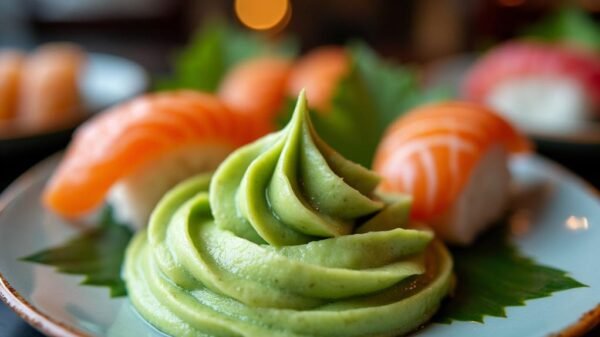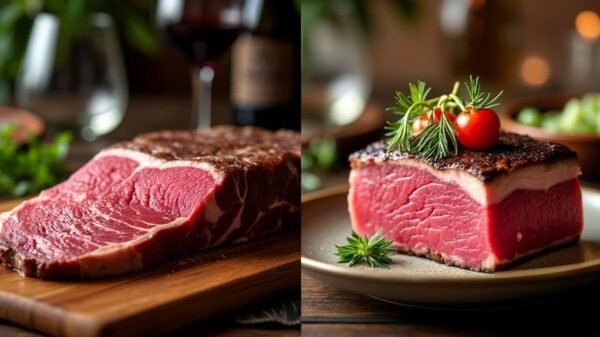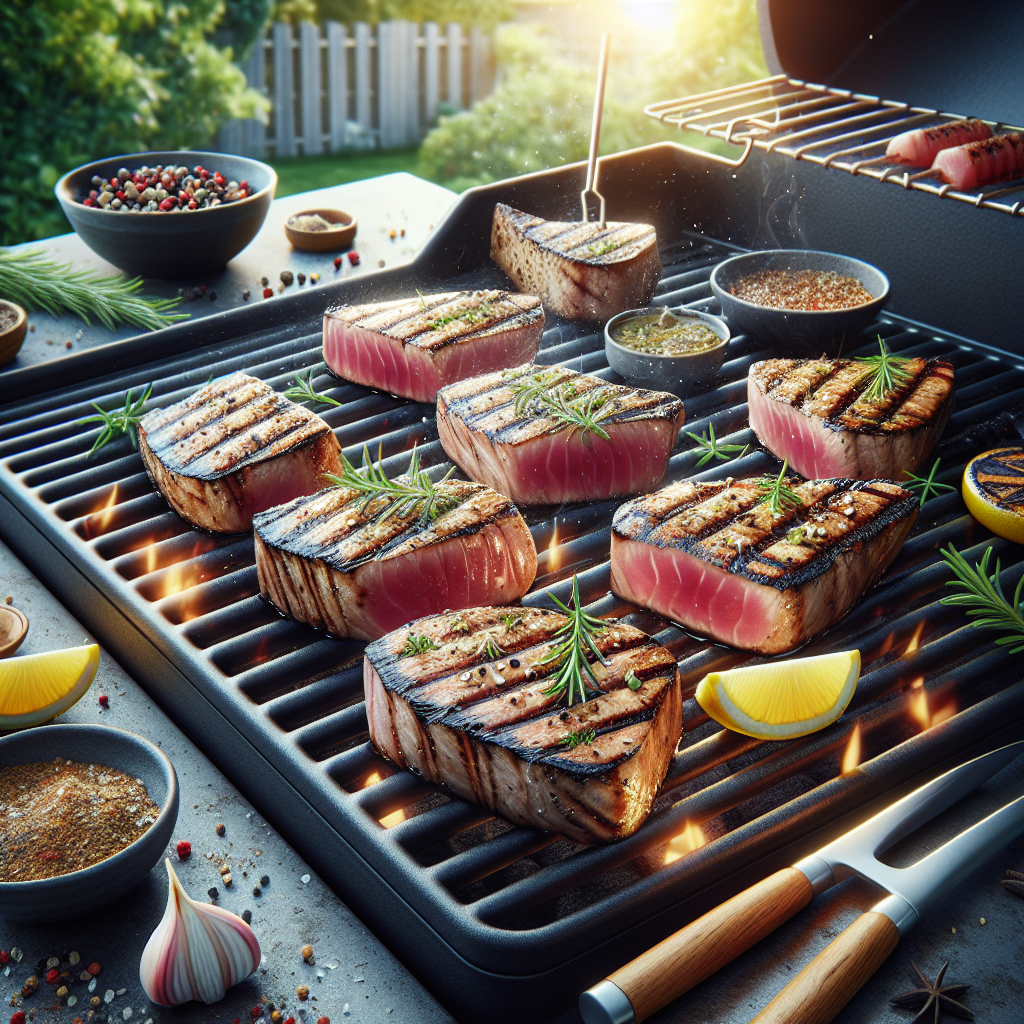Mastering the Art of Grilling Tuna Steaks
Grilling tuna steaks can transform a summer barbecue into a gourmet experience. Whether you caught the tuna, butchered it yourself, or purchased tuna steaks from a reputable fishmonger, knowing how to grill them to perfection is key. This guide will walk you through the steps to achieve tender, juicy, and delectable tuna steaks every time.
Choosing the Right Tuna
Andrew Zimmern, a renowned chef and television personality, advises selecting fillets that are at least an inch thick and sourced from fatty fish. The ideal tuna steaks have a good balance of lean protein and fat, ensuring the fish remains tender and succulent on the grill. Zimmern prefers grilling a small loin of tuna, much like he would with beef tenderloin, slicing it at the table for a dramatic presentation.
For those looking to experiment with different cuts, Zimmern suggests grilling the fattiest parts, such as the tuna collar or cuts from the belly like chutoro or otoro. These fatty sections are best cooked over indirect heat to avoid sooty flare-ups.
Preparing Your Tuna Steaks
Before grilling, allow your tuna steaks to reach room temperature. This step is critical as it promotes even cooking. Coat the steaks lightly with olive oil and season generously with salt and pepper. For an added layer of flavor, consider marinating the steaks. Popular marinades might include soy sauce, garlic, ginger, and a splash of lemon juice.
Grilling Techniques
Direct vs. Indirect Heat
Grilling tuna can involve either direct or indirect heat. For leaner cuts, direct heat is preferable as it sears the exterior quickly, locking in the moisture. Place the steaks directly over the coals or gas burners and grill for about 2-3 minutes per side. The goal is to achieve a nice sear on the outside while keeping the center pink and slightly rare.
For fattier cuts, indirect heat is the way to go. This method prevents flare-ups caused by dripping fat. Arrange the coals on one side of the grill or turn off one of the gas burners. Place the fattier cuts on the cooler side of the grill and cover. Allow them to cook slowly, absorbing the smoky flavors without burning.
Testing for Doneness
To check for doneness, use a meat thermometer. The internal temperature for medium-rare tuna should be around 120°F to 130°F. Overcooking can lead to dry and chewy fish, so it’s better to err on the side of undercooking, especially as the tuna will continue to cook slightly after being removed from the grill.
Serving Suggestions
Grilled tuna steaks pair well with a variety of side dishes. A fresh arugula salad with cherry tomatoes and a balsamic vinaigrette can complement the rich flavors of the tuna. Alternatively, a side of grilled vegetables, such as zucchini, bell peppers, and asparagus, works wonderfully.
For a more substantial meal, consider serving the tuna steaks with a quinoa salad or a light pasta dish tossed in olive oil, garlic, and lemon zest. Also, consider a dipping sauce like a spicy aioli or a soy-ginger glaze to add an extra layer of flavor.
Conclusion
Grilling tuna steaks can elevate any meal, whether for a casual family dinner or a more formal gathering. By selecting the right cuts, preparing the fish properly, and mastering grilling techniques, you can enjoy restaurant-quality tuna steaks in your own backyard. Take these tips to heart, and you’ll be impressing your guests with your grilling prowess in no time.





